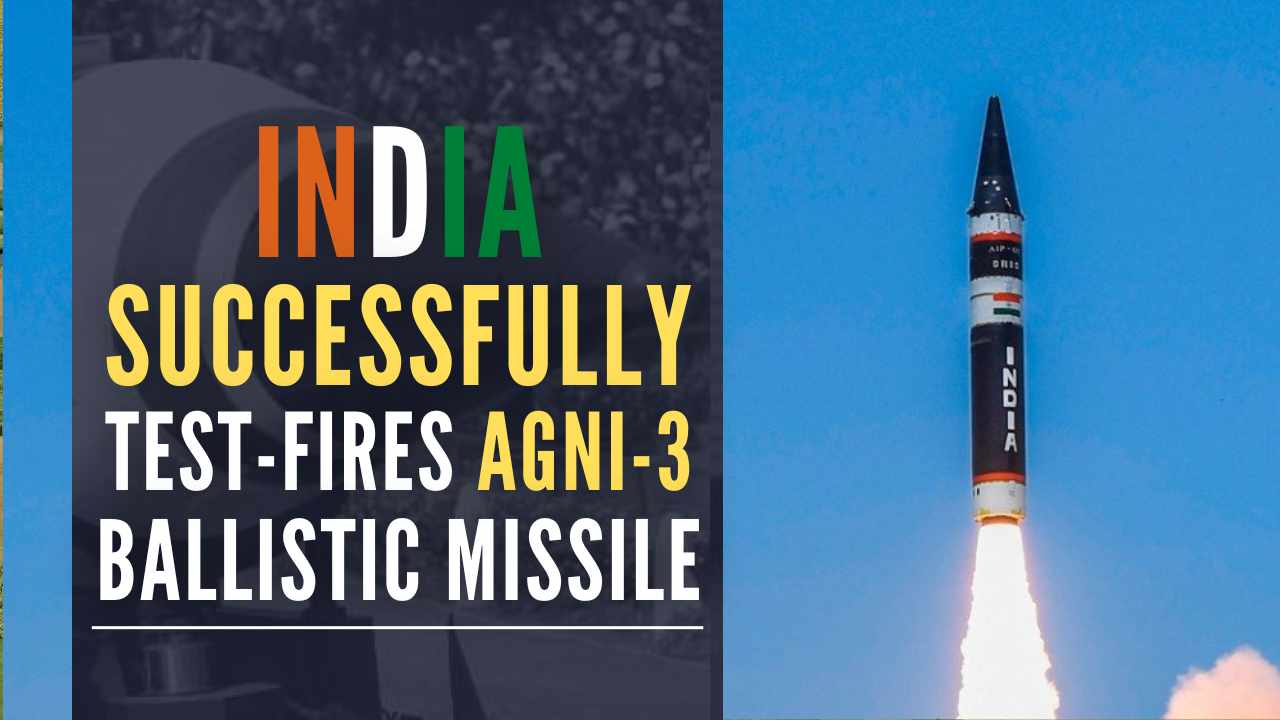The two-stage solid propellant-powered IRBM is operated by the Strategic Forces Command, which is part of India’s Nuclear Command Authority, and was developed by the Defence Research and Development Organization (DRDO).
The nuclear-capable Intermediate Range Ballistic Missile (IRBM) Agni-3 was successfully launched from APJ Abdul Kalam Island in Odisha on Wednesday as part of routine user training launches conducted by the Strategic Forces Command, according to the Ministry of Defence (MoD).
According to a press release from the Ministry of Defense, the launch was carried out for a predetermined range and validated all operational parameters of the system. The 16-meter-long missile, weighing more than 48 tonnes, has a range of over 3000 kilometres and can carry a payload weighing more than 1.5 tonnes. According to sources, the flight path was monitored by a number of radars, telemetry observation stations, electro-optic instruments, and naval ships at sea.
The two-stage solid propellant-powered IRBM is operated by the Strategic Forces Command, which is part of India’s Nuclear Command Authority, and was developed by the Defence Research and Development Organization.
The first known developmental trial of Agni-3 was conducted in July 2006, but the expected results were not obtained. In April 2007, it was successfully flight tested. Since then, the system has been successfully tested several times.
The Agni-3 test comes a little more than a month after India’s Strategic Strike Nuclear Submarine, INS Arihant, successfully launched a Submarine Launched Ballistic Missile (SLBM). “The launch is significant to prove crew competency and validate the SSBN programme, a key element of India’s nuclear deterrence capability,” the MoD said following the SLBM launch. A robust, survivable, and assured retaliatory capability is consistent with India’s policy of ‘Credible Minimum Deterrence,’ which underpins its commitment to “No First Use.”
India’s nuclear doctrine is based on the strategic postures of “credible minimum deterrence” and “no first use.”

